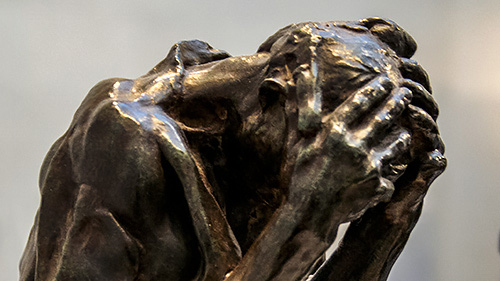Photo Corners headlinesarchivemikepasini.com
![]()
A S C R A P B O O K O F S O L U T I O N S F O R T H E P H O T O G R A P H E R
![]()
Enhancing the enjoyment of taking pictures with news that matters, features that entertain and images that delight. Published frequently.
The Burghers of Calais



15 November 2023
We have long wandered among the larger-than-life statues of The Burghers of Calais by August Rodin, often with a camera. Long before we knew their story, we admired his rendering of their torment. Who were these people in chains? What fate befell them?

We think of them daily now. But we suspect we are among an even smaller group than the burghers. The conversation is all about weighing one atrocity against another in the Israeli-Hamas war.
But art is often instructive in what it celebrates. Particularly so in this case.
The story in brief from Wikipedia:
In 1346, England's Edward III, after a victory in the Battle of Crécy, laid siege to Calais, while Philip VI of France ordered the city to hold out at all costs. Philip failed to lift the siege and starvation eventually forced the city to parley for surrender.
The contemporary chronicler Jean Froissart tells a story of what happened next: Edward offered to spare the people of the city if six of its leaders would surrender themselves to him, presumably to be executed. Edward demanded they walk out wearing nooses around their necks and carrying the keys to the city and castle. One of the wealthiest of the town leaders, Eustache de Saint Pierre, volunteered first and five other burghers joined with him. Saint Pierre led this envoy of volunteers to the city gates. It was this moment and this poignant mix of defeat, heroic self-sacrifice and willingness to face imminent death which Rodin captured in his sculpture, scaled somewhat larger than life.
Heroic self-sacrifice. What could be further from Hamas's strategy of hiding under Gaza's largest hospital, using civilians as a shield from Israel's military response to Hamas's Oct. 7 crime against humanity?
But, as it was for the people of Calais, it would be the better strategy for the people of Gaza.
As Charles Lane wrote in the Washington Post:
In short, the quickest, most appropriate way to save Palestinian lives, including those of Hamas fighters -- many of whom are numbered, albeit unacknowledged, among the Gaza Health Ministry body count -- would be for Hamas to surrender. After all, it has no prospect of meaningful victory.
But there are no burghers among Hamas. Only terrorists and terrorists do not surrender. And so the Palestinian people in Gaza have not been spared.
Rodin was not wrong to scale heroic self sacrifice larger than life. Nor was he wrong to render it in bronze that would outlast our capacity to forget.